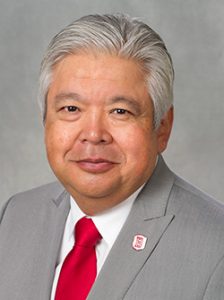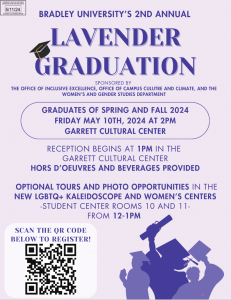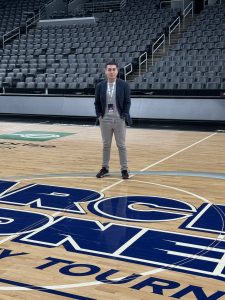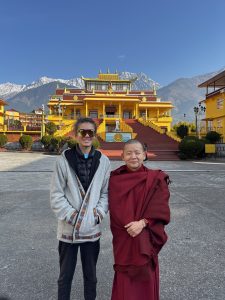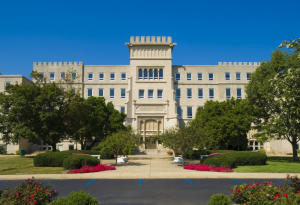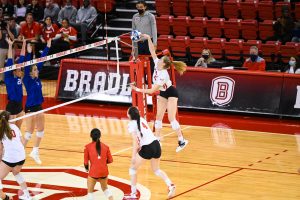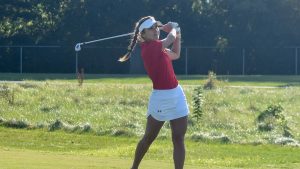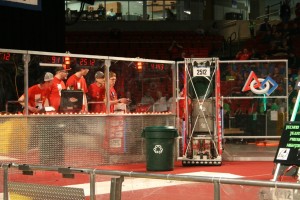
The For Inspiration and Recognition of Science and Technology (FIRST) Robotics competition claims to mold young, talented minds by offering challenging scientific and technology challenges.
The FIRST program reaches more than 54,000 students worldwide, and every year regional competitions are held to give students an opportunity to compete for the world championships in St. Louis,
according to the US FIRST Robotics Competition website.
Bradley University hosted the Central Illinois Regional, March 18 – 21 in Renaissance Coliseum, where 38 teams ranging from 14 to 18 years old competed to qualify for the world championship April 22-25.
“Approximately six weeks prior to the first competition, teams are all sent the same standard set of parts,” Roboteers 2481 senior team member Aaron Lowery said. “These parts include basics such as batteries and motors. We then are allowed to build upon these parts through fundraising and sponsorships.”
Robots for this year’s competition season averaged about six feet tall and were limited to 120 pounds maximum. Each year, teams are also faced with a different challenge theme that is consistent throughout each competition.
The 2015 season challenge was “Recycle Rush.” The goal of the game was to stack as many recycle bins as possible for points. If a green recycling can was placed on top of the stack, the points tripled. Points were also awarded if “litter” (pool noodles) was placed in the green recycle cans on top of a stack of bins.
Each team is organized by alliances combining three different teams. Team captains, who have compiled a list of possible candidates, choose these alliances.
“Each team should have someone watching the competition and taking notes about the strengths and weaknesses of each robot,” College of Engineering and Technology Assistant Dean for Student Success Julie Reyer said. “What they are trying to do is figure out which robots will make the strongest team. You want robots that have complimentary skills.”
Even though FIRST is a robotics competition, it promotes convergence with other valuable skill sets such as marketing, journalism, teaching, community involvement and presentation skills.
“This is a nice example of convergence in action, because part of convergence is teaching engineers to understand that there are other points of view,” Reyer said. “There’s a list of business people and artists that have different points of view that are equally valid. It’s a nice example of showing everybody that there’s a part of building this robot that is accessible to them.”
There are 15 different awards given at the conclusion of the competition. For example, the gracious professionalism awards is given to the team who has exhibited the highest form of professionalism throughout the competition.
The most prestigious award, however, is the Chairman’s Award. This is given to the teams who have had a sustained presence on and off the field. They also represent a model for the other teams to emulate and best embodies the purpose and goals of FIRST with community outreach.
Beyond competition, FIRST participants also went on campus tours and were able to attend an open house in Jobst Hall, where students could have direct contact with faculty and the different resources offered through the four different engineering departments.
“Because many of the FIRST participants had not been to our campus before, we wanted to provide an opportunity for them to learn more about the Bradley Experience,” Associate Vice President of Enrollment Management Justin Ball said. “Campus visits are a critical component of a student’s college search and, although the tours were not the sole focus of their time here, we hope what the students learned about Bradley, through campus tours and other conversations with Admissions staff, will encourage them to apply and one day attend.”
Some FIRST competitors had already been accepted to attend Bradley, along with students contemplating enrollment.
“I have already applied and been accepted into Bradley’s mechanical engineering program,” ARGOS 1756 senior team member Slade Jewell said. “Getting a chance to see campus and be here for the competition has really helped me confirm that I have made the right decision.”
Bradley students were also involved in the event.
“As a judge, I am always inspired by learning a lot from growing young future generations,” graduate industrial engineering student Rakesh Ramasamy said. “I have been with FIRST as a mentor and coach [since working with the] 2013 Indian National “Inspire Award” FTC Team…[Now], playing the role of judge has given me loads of experience and exposure while working with several veteran judges and people.”
For more information on the winners and the competition, visit usfirst.org.
